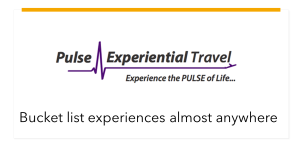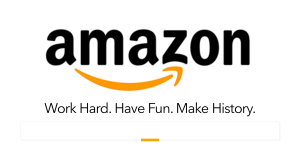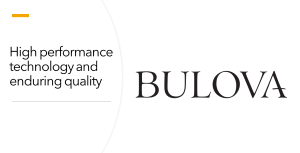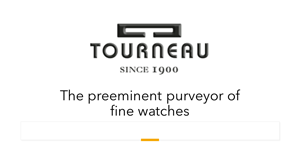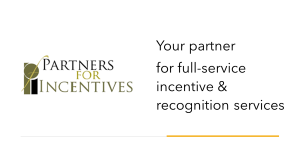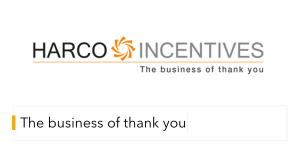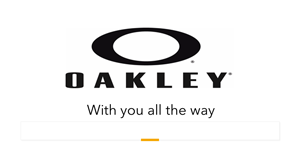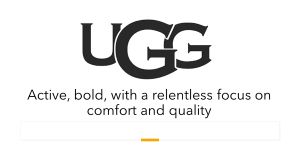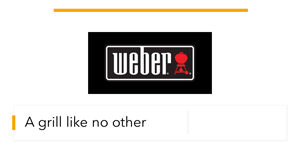Market Report: The Role of Recognition in the New World of Sustainability Reporting
RPI Official Statement
Achievers, Jeff Cates, CEO
Appreciation at Work, Dr. Paul White, CEO
Bonusly, Raphael-Crawford Marks, Founder, CEO
Richard Garlick Associates, Rick Garlick, Principal
Quality Incentives, Jeff Edwards, Vice President Marketing, Owner
Sparck, Anna Straus, Founder, CEO
Work Tango, Rob Catalano, Chief Strategy Officer
Others That Did Not Respond
What role will the recognition field play as organizations contend with growing pressure to better manage and disclose how they engage with their employees, customers, supply chain and distribution partners, and their communities? RRN checked in with the industry’s trade association, Recognition Professionals International, and 15 recognition firms ranging from some of the oldest to newcomers. RRN's sister publication ESM recently reported on the potential role of management consulting and corporate communications companies in corporate sustainability management and reporting.
Over the last few years, organizations have faced increasing pressure to publish meaningful corporate sustainability reports from investors, talent, customers, and communities. Now European Union government regulators have upped the ante with a new law known as the Corporate Sustainability Reporting Directive seeking to understand the risks and opportunities of large organizations related to the environment; practices related to customers, employees, supply chain and distribution partners, communities, and governance, widely known as ESG (Environmental, Social, Governance) and increasingly as Stakeholder Capitalism.
Over a dozen of the leading US legal and management advisory firms characterize the new EU Corporate Sustainability Reporting Directive as having a “tsunami” affect given that it will directly impact thousands of companies in the US and many more around the world that do business there. It is expected to raise the standards of corporate sustainability reporting in the way that the EU GDRP (General Data Protection Regulation) has affected privacy management practices around the world. Within a few years, the corporate sustainability (often called responsibility) reports currently published by most companies will be effectively obsolete compared against the more meaningful audited reports required by the EU law involving specific disclosures in four areas: employees; employees of a company’s distribution and supply chain partners; customers, and communities, including environmental impact.
Specifically, among at least 82 metrics, companies subject to the law and many in their distribution and supply chains will have to publish public, comparable, and eventually audited reports including such metrics as:
- Employee turnover
- Gender diversity
- Gender pay disparities
- Executive to worker pay ratios
- Worker voice and representation
- Unionization rates
- Incidents of discrimination
- Programs to access skills development .
- Number and nature of performance reviews
- Injury rates
Because US businesses and most around the world have never had to publish an audited corporate sustainability report that addresses so many issues related to employees and those of supply chain partners, not to mention the management of customers, supply chain and distribution partners, and community relationships, the question becomes, who will help lead the effort? Organizations that view the new law as a compliance issue will put the task primarily in the hands of attorneys. Those who see it as an opportunity to enhance returns by focusing all stakeholders on the same organizational purpose, goals, and objectives will need experts in stakeholder management, analytics, communications, human resources, and continuous improvement processes, and eventually human capital audits.
Based on the history of ISO 9000/1 quality management standards, which, while voluntary, became in effect mandatory for many companies when major ccustomers adopted them and demanded the same of their supply chain partners. That in turn energized and expanded the entire field of total quality management, including advisory firms with various systems; independent auditors, and thousands of suppliers of gauges, products, learning systems, etc. related to implementation, metrics, and reporting.
To find out the role the recognition field expects to play in this apparent new business opportunity, RRN reached out to Recognition Professionals International and 15 of the most established as well as a few new recognition companies to try to identify where practitioners in the field believe they can play in the new world of strategic people management. Will recognition firms be simply one of many products and services used as part of a strategic solution overseeing general workforce engagement and reporting issues or can some of these companies play a strategic role to help oversee the entire process?
The early conclusion, based on these interviews: recognition company leaders believe their firms have an important role to play but the jury is out on whether any of these companies will seek the opportunity to manage the strategic process as an advisory firm would do in other areas of management consulting, i.e., with a professional services division charging advisory fees for strategic planning and metrics development, implementation, and managed outsourcing to provide clients a 360-degree solution to workforce engagement and performance toward the publication of meaningful corporate sustainability reports. General observations include: many companies have been burned with do-it-yourself, poorly designed programs and then blame the concept; the recognition field has done a good job of educating HR (human resources) management, but not the C-suite, and a few made reference to the new European Union Corporate Sustainability Reporting Directive) with the belief that ESG (environmental, social, governance) and more rigorous reporting standards may create opportunities for the field.
Recognition Professionals International 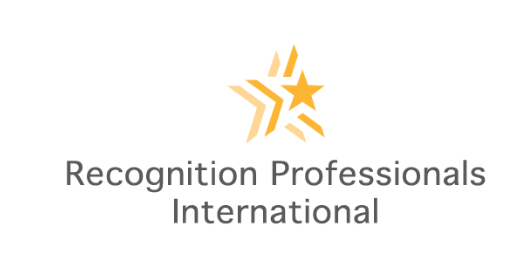
Founded in 1998, Recognition Professionals International is the only professional organization focusing on the recognition field. Now part of the Incentive Marketing Association, it maintains the field’s only learning and certification program.
“As employers look at how to organize and deliver their ESG (Environmental, Social, Governance) and sustainability strategies, they will also be looking at how to create strong cultures and engage employees in achieving their goals. This is where organizations like Recognition Professionals International (RPI) provide value. RPI brings together a large community of recognition practitioners and solution providers all focused on enhancing the employee experience. Whether businesses are addressing long-term strategic goals, daily workplace activities, training, or market trends, a well-designed employee recognition program can help employees feel valued and connected to the business’s mission and goals.”
It continues, “As advocates for positive employee experiences that foster engagement and retention, RPI provides members a forum to share their experiences, successes, and challenges. And, through the RPI Best Practice Standards®, provides members a roadmap to build impactful recognition strategies as they address new initiatives such as ESG (envrionmental, social, governance) and sustainability.”
Achievers, Jeff Cates, CEO .jpeg)
Founded as I Love Rewards in 2002 and then purchased by venture capital investors seeking to scale it as a software company, Achievers is now private-equity owned. It describes itself as an employee recognition software company to “enhance employee experience. Achieve a culture of belonging. With high-frequency recognition complemented by best-in-class rewards, feedback, and custom surveys, our unique approach to employee engagement has been proven to increase employee retention, satisfaction, and productivity.” CEO Jeff Cates has extensive background in senior product management, including a long stint at P & G Canada. See RRN: Achievers CEO: Without Program Design, Technology Has Little Value
Key Takeaways. CEO commitment is vital. Most of the company’s clients already use the platform to align organizational values. ROI measurement linked to goals and objectives is “super critical.” There is a need for strategic guidance on stakeholder management, but there are only a few companies that can provide it, and that probably won't be recognition companies.
“It all starts from the top,” says Cates. “Great active usage starts with the CEO, and not just reward centric recognition. We have numerous examples of incredibly healthy usage stats, where we can align it to the usage of the CEOs. Highly adopted and actively used programs mean CEOs and managers have a powerful communication tool in their arsenal to highlight the company values and inject positive reinforcement into the company.”
Cates believes that customers already are using his company’s system to align organizational purpose, values, goals, or other tactical efforts. “I’m not sure we have any of the near 500 customers on the platform that don’t align it to their corporate values, and specific areas of focus, such as safety, customer satisfaction, or innovation. This is the chance to truly live their values each and every day.”
More organizations are connecting their recognition programs to other engagement efforts, he says. “The most effective and highly used programs are those that align to solving multiple problems. This means extending the platform to support to other areas of EX (employee experience) spend, such as wellness, or flex time benefits.”
Cates says ROI measurement, either qualitative or quantitative, linked to key organizational metrics and goals is “super critical. The organization must review the data, assess for impact or weak spots, and actively engage. The reason why our active usage and activation is significantly higher than any other vendor is that our support teams are focused on these reviews. We are not incented by ‘reward’ spend. Our customer service team is focused on active usage, NPS (net promoter scores), customer case studies creation and renewals. If you do the first two things right, the next two things are easy.”
Rewards and recognition are not “the magical elixir to solve all mis-management ills, but it’s pretty darn close. Having said that, don’t lean into the reward side thinking that it covers major gaps in compensation. But recognition is always a positive.”
When it comes to the role of technology, “I think the bigger thing here is understanding your employee base and what technology they have access to. In some cases, this may mean complementing digital tools with other forms of communication. We build mobile first and give people the choice between native apps and mobile responsive web. Mobile gives unique opportunities to use other technology on the phone, such as the camera, and geo location. It’s super important to build programs that are thoughtfully built around your user base.”
To be distinguished from compensation, Cates says, recognition must be “timely, specific, personalized. It is important for programs to not overly focus on rewards. The best programs are low to no reward. This allows for micro-rewarding and helps to ensure that the reward is not a bottleneck to recognition. You can of course use programs like ours to manage spot bonuses, and there are good reasons to do that, but that is very different than the core reward and recognition program hygiene.”
While Cates says his company does not generally encounter CEOs in the sales process, “Most often we see CHROs in the decision process, if not CFOs and CIOs. The research process is often delegated to procurement and/or a compensation and benefits analyst. Most have scoring processes and collect a team of individuals to run the evaluation, ensuring that all parties are being heard and actively attempt to remove bias from program selection. This process has gotten better over time.”
As for rewards, “employees should be free to spend their points. Having said that, companies can create matching programs to show support to causes. At the end of the day though, the choice is the employees. Rewards and recognition providers should continue to push for fresh content though, that keeps an air of excitement to the program. Just cashing out dollars to buy stuff on Amazon has low meaning and creates a transactional program. Having said that… employees should make their own choice on what matters to them.”
Length-of-award programs still matter, he believes, although need to be retooled for the current average lifespan of an employee. Enabling frequent expressions of appreciation are powerful forms of communication, he notes, and that the best programs are the ones with the most mature human resources teams who take a scientific approach to their program design, maintenance, and impact. This means looking at the various people data you have and assessing for impact.”
As for those companies seeking strategic guidance that looks at recognition in the context of a strategic people management process, he says, “There are only a few companies that I know of that specialize in providing assets or support in building business cases for rewards and recognition investment or creating a thoughtful buy process.”
Appreciation at Work, Dr. Paul White, CEO, Founder 
Founded 2011, privately owned Kansas-based Appreciation at Work “helps organizations create healthy workplace cultures” through its 5 Languages of Appreciation in the Workplace system, Motivating by Appreciation Inventory, and its new Enterprise Engagement technology. With monthly sales of 5,000 books in 29 languages, total sales of over 600,000, and nearly 300,000 employees having participated in the Appreciation at Work inventory, and as a frequent speaker at large and small companies often hosted by CEOs and other senior management, he and his company have compiled broad insights into actual business practices. Dr. White has a background in organizational psychology. See RRN: Dr. Paul White: Recognition Takes a System.
Key takeaways: “Obviously something isn’t working or employee engagement wouldn’t be at record lows according to Gallup surveys...CEOs know they have a problem and naturally turn to rewards and recognition, but have never been convinced...What is needed is a holistic system, and the management consulting firms, whatever their shortfalls in this area, likely will be the go-to resource for most large companies, who rely heavily on these firms for managed outsourcing.”
Dr. White emphatically agrees that companies are “becoming more aware of the practical importance of dealing with human capital issues, and its impact on how their business functions or not. They are having a lot of discussion but after that, frankly, most are fairly clueless.” The first inclination, he adds, is to “look at the existing recognition and reward providers because they're there. Most aren’t really looking at it from a strategic point of view because the concept is taught almost no where in business schools or elsewhere.”
As a result, he believes the impact of most “reward and recognition programs are pretty minimal” because of their ad hoc nature. He points out that overall employee engagement scores have fallen to record lows at the companies surveyed by Gallup, probably those large enough to most likely be using the current recognition solutions. “At best, most programs have marginal impact on culture and performance given the ad hoc nature of these programs. Companies are always looking for a practical fix.”
The result, he says, is a general dissatisfaction and distrust of recognition programs in the C-suite. “Many just keep doing more of the same thing, it seems to me, or maybe they're tweaking it a little bit. So then, they're not really getting the results that they hope for, and because of that have become skeptical.” The answer, he says, is to understand that recognition and appreciation are important aspects of an entire process that requires ongoing CEO, C-suite, and front-line management support, aligned with all the ways organizations communicate, inform, train, foster innovation, and collaborate, etc.
Recognizing the need to address today’s retention issues, “I do believe that CEOs will begin turning to outside expertise from the leading management consulting firms. These issues are a reach for those companies as well, because none of them that I know of have training in this strategic and systematic approach to workforce management or their clients would have been doing this for years. That said, these types of organizations do a very thorough upfront assessment. And then they come back with a very structured systematic plan, with ongoing measurement and a feedback loop. We certainly know that the current model isn’t working because of all the money spent and the obviously poor results.”
Bonusly, Raphael Crawford-Marks, CEO, Founder .jpeg)
The home page of the 10-year-old Colorado-based venture-funded technology company Bonusly reads: “Increase employee engagement. Decrease turnover costs. Learn how a culture of recognition with Bonusly can positively impact your bottom line.” Founder, CEO Raphael Crawford-Marks has an extensive technology background and also served in the Peace Corps. See RRN: Bonusly CEO: Analytics Will Be a Differentiator in Recognition.
Key takeaways. “Unfortunately, many recognition programs and platforms are little more than gift card providers...So, it’s not surprising that some companies are leery of recognition programs, because their past experiences with poorly designed efforts haven’t produced much value. We need to think beyond rewards and find ways to encourage consistent recognition. And we need to capture data from those recognition events and unearth insights that can inform better, faster business decisions.”
Raphael Crawford-Marks is optimistic about the prospects for recognition. “Certainly, retention is a top-of-mind issue for CEOs. Despite the challenges and subsequent reductions in force we’ve seen at large technology companies, so far, the economic pain seems to be largely confined to that sector. The latest report from the US Bureau of Labor Statistics shows that the unemployment rate of 3.5% has remained largely unchanged since early 2022. Most companies are still struggling to hire and retain talent.”
Will companies turn to recognition companies for the solution? “While CEOs may not immediately think of recognition to improve engagement and retention, they’ll be looking to their head of human resources for solutions. And over the past five years, we’ve seen a complete turnaround from many of the senior human resources managers and chief people officers regarding the importance of recognition to increase employee engagement and retention. Both research and the experience of our customers demonstrate over and over again that when employees receive frequent, meaningful recognition for their work from managers and their peers, engagement and retention rise significantly. We expect to see the adoption of strong recognition programs to continue to grow steadily.”
Those CEOs who are listening to the HR experts in their companies are calling upon recognition companies for solutions. “And yes, they should be—especially since a strong recognition program can provide a wealth of rich data about how a company truly functions, such as who’s actually working with whom, and the contributions individual employees make that only peers may see. Additionally, because the data is always current, executives can follow how these patterns change over time and use it to inform critical decisions.”
The unwillingness of most companies to pay but a fraction for employee engagement technology that they pay for customer relationship management, he observes, “suggests that we’re still at an early stage in the evolution of recognition programs and software platforms. They provide a great deal of value, especially with retention and engagement. Leading companies recognize the value of recognition; however, and especially once the market recognizes how much insight organizations can uncover from the data recognition software platforms produce, we’ll see a greater willingness to make larger investments.”
The recognition field has done a poor job of branding and marketing itself, he believes. “Unfortunately, many recognition programs and platforms are little more than gift card providers. In order to see significant results, the platform needs to facilitate and encourage meaningful recognition from peers and managers at least once or twice a week. Also, we’ve found that rewards are much more meaningful when employees can choose for themselves what they’d like to receive. So, it’s not surprising that some companies are leery of recognition programs, because their past experiences with poorly designed efforts haven’t produced much value. We need to think beyond rewards and find ways to encourage consistent recognition. And we need to capture data from those recognitions and unearth insights that can inform better, faster business decisions.”
The industry, he says, must emphasize to CEOs and senior management that “Regular, specific, and timely recognition significantly increase engagement and improves retention, and we have the data to prove it. Bonusly conducted a survey last year of employees, which found that nearly two-thirds (65%) said they are likely to stay at a job if their coworkers and peers recognize their work; and 65% said that they would work harder if they felt like their contributions would be noticed by management. To retain employees, companies must find an effective way to ensure their people’s good work is recognized, celebrated and rewarded. That’s what Bonusly is all about.”
Richard Garlick Associates, Rick Garlick, Principal.jpeg)
Rick Garlick is Principle of Richard Garlick Associates and was most recently research director for Incentive Research Foundation, undoubtedly the leading research organization in the IRR (incentive, rewards, and recognition) field. Besides the multiple studies overseen during his tenure at the IRF, his research firm conducted the 2022 Incentive Federation incentive marketplace study, and he has conducted multiple studies over the year on employee engagement for Gallup and other firms. He has had decades of experience in the engagement space working for such companies as Gallup, Maritz CX, and JD Power.
Key Takeaways. “The fundamental problem with recognition programs is not the rewards or the technology platforms. There are many options, almost all of which can work, but only if the CEO, senior and front-line management are completely behind the effort. Whatever companies are doing today isn’t working. “According to the latest Gallup surveys, employee engagement is at its lowest level, and I don’t think customer satisfaction levels are much better.”
According to Garlick, “The fundamental problem with recognition programs is not the rewards or the technology platforms, but rather how they are used, or not used. There are many options which can have a big impact, but only if the CEO, senior and front-line management make recognition an ongoing part of the culture. “None of the companies that consistently measure employee engagement are telling a positive story. The terms ‘great resignation’ and ‘quiet quitting’ have become part of HR vernacular. On top of that, the American Customer Satisfaction Index (ACSI) suggests customer satisfaction has plummeted to some of the worst levels we’ve seen in 20 years. Whatever solutions we have invested in for the past several decades, either didn’t really work, or weren’t sustainable for the long haul.”
Garlick says that the most sustainably successful companies “create a meaningful and authentic purpose and culture with clear goals and objectives passionately supported by stakeholders who feel proud of both the work they perform and the organization for whom they do that work. That can’t be accomplished by giving lip service to the importance of people, or installing a recognition platform that may not currently be used to achieve its fullest potential. It must be a systematic approach aligned with all the ways the organization informs, teaches, develops, encourages its people; measures, and continually improves. There must be a true belief in the organization’s goals, mission, and values, and a commitment to reinforcing those things through consistent meaningful recognition.”
The payoff, he says, can be measured in terms of higher employee retention, productivity, quality, and referrals. “The challenge is that many organizations have inadequate measures around employee performance and the impact on the bottom line. It’s doable though. It starts with organizations finding the will to drive greater value from their recognition and incentive programs and bringing the right expertise into the organization to accomplish this goal.”
Sparck, Anna Straus, Founder, CEO .jpeg)
Founded in California three years ago and now venture backed, Sparck’s home page message is: “Recognize. Engage. Retain. It goes beyond the perks… Recognition as unique as you are.” Anna Straus, the CEO and Co-Founder, has a background in business management leadership coaching, training, and speaking.
Key takeaways. Management consulting companies likely will become involved, especially because of the new EU Corporate Sustainability Reporting Directive, but recognition and the actionable data it provides provide so much value, it requires the expert design and implementation of specialists, she believes.
“There's a shift that’s happening in the market right now that will give recognition companies more credibility as a tool to help align strategic initiatives within organizations. It’s often not the initial thought of CEOs to call upon recognition firms to address new human capital reporting requirements—including the new EU Corporate Sustainability Reporting Directive. Afterall, organizations typically lean more toward larger consulting companies to help them navigate these uncertain waters. However, as conversations evolve, we're educating leaders about how recognition can weave into initiatives and support the reporting that will be required. The role of recognition is going to be far more prevalent as people management practices become more visible and transparent, but the reality is that it is still not the initial thought for CEOs at this point."
That said, she does not believe the management consulting firms “have much experience with the recognition world, but rather provide a global view that can help point them to specific areas and where they should invest their time and resources to achieve their objectives. This is where we move from a nice to have to a must have” in which companies like hers can add value that management consulting firms cannot.
Straus says “When it comes to people management, there is a push in the industry to provide an all-in-one technology solution that includes performance management, engagement surveys, polls, recognition and more. The challenge is that in most of these scenarios recognition becomes a generic shout-out on a newsfeed. There is an art to employee recognition that is overlooked. It needs to be personalized and happen at the right time, in the right way, with the right reward to get results. The experience needs to get to the root of how employees feel appreciated and motivated. When these individualized recognition moments are aligned with key initiatives within an organization, that’s when executives will see a return on their investment.”
She believes the issues involved with program design, technology, and analytics, and the integration with software and other issues, absolutely require specialization. “Of course, organizations need a more holistic approach. I don't think that recognition can be the only solution, but it's a huge part of it.”
The willingness of companies to pay up to $70 a seat or more for customer relationship management encourages her. “Once organizations experience the bottom line impact of effective recognition due to an increase in employee loyalty and performance, that's when the value increases and larger investments will be made.” The potential for ROI, she believes, is huge. “One of my biggest passions is to look at the people possibilities within organizations to stimulate economic growth and innovation. The research supports the financial returns of effective recognition in the workplace; however, it is more than just an investment in rewards, as many believe, it’s an individualized experience. When this is done right, that's when organizations will see the financial impact. And when you add the impact of the new EU CSRD, it provides incredible transparency.”
Quality Incentives, Jeff Edwards, Vice President Marketing, Owner 
This 60-year-old incentive and recognition company features the following message on its home page: “Motivating people. Inspiring higher performance. Delivering results. The proof is in the program.” Edwards has worked for the company for the past 23 years.
Key takeaways. Many companies remain unaware of the benefits of recognition programs and/or try to design the programs themselves. When the programs fail, they often blame the recognition program without understanding the elements of proper program design. He believes most companies will achieve better results if they use the services of third-party expert firms.
There are two kinds of companies—those that utilize some form of workforce management/
engagement strategy and those that do not. The first category can be broken down even further—companies that oversee their own strategy deployment and those that outsource all or part of it to a third party. Based on our experience in the engagement and recognition industry, as well as recent internal research, it is our estimation that companies without a current workforce management strategy will first attempt to implement one themselves. In part, this is due to a relative unawareness of the employee engagement industry, but also due to the common, if misguided view that third-party workforce management programs are unnecessary expenses. In the current global economic environment especially, companies with this view will attempt to mitigate any additional costs to the extent they can. They will start in-house.”
He continues, “Unfortunately, our research also shows that most businesses attempting to run internal incentive or recognition programs fail due to ineffective goal setting, capital deployment, and time management. Further, through the lens of an obligatory expense, as these new (human capital) requirements will mandate, there is insufficient emphasis by managers on key pressure points within workforce management priorities that lead to stalled or declining progress/engagement as well as a ‘baked into the cake’ attitude from workers—they quickly lose the motivation that was sought after in the first place.”
On the other hand, “For companies with an awareness of current recognition and engagement strategies, either through having operated or outsourced a program in the past or through currently operating or outsourcing a program, our research shows a high likelihood of increased utilization of recognition companies. With added pressure from these new disclosure regulations, companies with internal implementation experience are likely to understand their efforts will be ineffective as program and reporting requirements grow, so they are likely to seek outside partnerships. Lastly, firms with current or recent experience with third-party employee engagement are more likely to understand these programs as strategic workforce investments, whereby success generates a return in the form of lower turnover, higher retention, improved safety, higher productivity, and anything in between.”
According to the company’s research, he says, “over half of businesses that don’t have a recognition or incentive program haven’t considered them. This is due to a lack of information or awareness of third-party providers. Of businesses that do have a program in place, over half manage some or all aspects of their program internally. The gap (and opportunity) is obvious for recognition companies, especially in the wake of the new requirements.”
He believes CEOs would benefit from the tools inherent to most recognition programs offered by recognition companies. “Not only can technology improve tracking, but companies would also benefit from the positive results that professionally designed recognition programs produce.”
He believes that companies with a lack of awareness of the employee recognition industry, with previous bad experiences managing recognition/engagement strategies themselves, or who view the incentives and recognition industry as a discretionary expense when the market is favorable (or unnecessary altogether) are likely to fall into the trap of underinvesting in effective noncash workforce engagement and motivation strategies such as employee recognition software.”
Additionally, “employee recognition software tends to be most effective when deployed and managed by third-party recognition program providers. Without experts who know how to pair a company’s unique culture, goals, KPIs, and success metrics with the right recognition software to create a truly custom, adaptive solution, our experience and research have shown that simply throwing money at software to check the box is ineffective. Employee recognition solutions—of which software is a part—are designed not to be net, check-the-box costs for companies, but rather strategic investments that generate a return. The software itself is only as good as those who manage it. Companies with a poor track record when it comes to recognition software likely paired it with the wrong management structure and are not likely to try it again in the future.”
Some companies see more value in investing in CRM software “because the direct impact on customer retention is more visible as opposed to the more ‘indirect return’ of successful recognition solutions.
Has the recognition industry done enough to promote itself? “Properly designed and supported programs have been proven to provide strong ROI. Interestingly, the difficulty of creating a business case is the most prominent reason for not implementing a recognition or incentive program. Recognition companies should come alongside to guide clients according to best practices and program options for the benefit of providers and clients alike.”
Sixty percent of businesses considering a recognition or incentive program prefer a customized solution, he observes. “This is preferable for all but the most basic program structures. Those in the recognition space have the burden of proof in communicating the benefits and historic outcomes they know to be realistic. Objective industry data and trends are available from the Incentive Marketing Association, the Incentive Research Foundation, and others – and should be utilized along with case studies and client success stories.” (Click here for the RRN library of resources from all known sources, or here for the broader library on stakeholder management and reporting.)
Edwards continues, “The labor situation continues to present significant challenges across all industries, especially in the service and manufacturing segments. As job openings have increased over the past two years, labor force participation has decreased with no indication of a reversal in sight. The problem is not exclusively tied to the Covid-19 pandemic. While certainly a contributing factor, it is perhaps more accurate to say the pandemic accelerated factors already at work in the workplace. The labor force decline is the result of:
- An increase in retirements – already increasing as boomers are reaching retirement age, the pandemic presented an opportunity for early retirement.
- A decline in the birth rate – a trend that is not new, the result is simply fewer people to fill open positions.
- A decrease in labor force participation – simply put, there are fewer working-age adults willing to opt for employment. For those that do, many seek part-time positions.
- A decrease in higher education enrollment – also not new, higher education enrollment has been in decline for some time. This means there are fewer qualified candidates available.”
According to Safety+Health, citing MetLife’s 21st annual US Employee Benefit Trends Study, he says, “job satisfaction is at its second-lowest percentage since 2013. The study also reveals that one out of four employees reported that they don’t feel cared for by their employer. Those who don’t feel cared for were 72% less likely to feel valued by their employer and 65% less likely to feel a sense of belonging at work. Recognition programs and solutions are designed to convey care and gratitude from employer to employee. They reinforce the positive aspects of the working relationship – we are thankful for you; we care about you; we are proud of your accomplishments. They make a difference in recruiting and retention.”
WorkTango, Rob Catalano, Chief Strategy Officer 
Ontario-based WorkTango, founded in 2013, is now part of the private equity owned group along with Kazoo suite of products offering recognition, employee voice, and performance management technologies. Its home page says: “Engage, inspire, and retain your employees with WorkTango. Discover Employee Recognition & Rewards, Employee Surveys & Insights, and Goals & Feedback— available individually or bundled within WorkTango's holistic Employee Experience platform.” Before founding WorkTango, Catalano was among the early founders of Achievers. See RRN: Employee Experience Firm Kazoo Buys WorkTango Employee Voice Platform.
Key takeaways. “In 2023, I believe there will be a steady increase in CEOs who invest in employee recognition,” predicts Rob Catalano, Chief Strategy Officer of WorkTango. “It’s hard to refute the impact employee recognition has on employee engagement; a McKinsey study found that “up to 55 percent of employee engagement is driven by non-financial recognition—which serves as the biggest driver of employee experience.”
He continues, “Recognition has a positive impact on reinforcing key values and behaviors. It also influences key people metrics such as engagement and retention. During a time in which organizations are navigating economic uncertainty and need to ensure that all team members are aligned with organizational objectives, recognition remains a powerful way to drive and celebrate critical performance metrics (for example, driving leads, boosting customer satisfaction scores, increasing internal hire referrals, saving budget, or any other key business health metrics.”
In Catalano’s experience, “organizations that have an established recognition and reward strategy in place understand the value of such programs and infuse strategic decisions into their recognition and reward structure. For organizations who want to drive compliance on data privacy or around new security and/or safety measures, for example, recognition and rewards platforms that also include incentives have proven to be incredibly successful in prompting action. With a structured recognition strategy in place, it’s simple for an employer to communicate any new behaviors that will be recognized and rewarded using their existing technology and communication vehicles. However, I certainly don’t think picking up the phone to dial a recognition company as an immediate reaction to new laws or other changes would be second-nature to most CEOs, or even most human resource professionals.”
Catalano believes that “many companies still operate under the mindset that expenses related to customers are revenue-generating, and therefore are worth the investment, while expenses related to people should be minimized as much as possible. What organizations fail to understand is that desired outputs such as customer satisfaction and shareholder value are directly impacted by the inputs of employee behaviors and the products they build (or the services they provide). Investments in employee recognition technology will translate into positive business outcomes as the technology supports data-driven insights, improved customer satisfaction scores, improved employee retention, improved productivity, and more. Forward-thinking organizations look at the proven ROI associated with employee recognition and justify the cost internally using those data points, rather than allowing finance departments to categorize people investments as unnecessary expenses.”
“The recognition field has done a great job in establishing value to HR leaders,” Catalano believes. “However, that ROI and value story has not been well-communicated to the rest of the C-suite. The narratives we discuss today at WorkTango to help HR teams justify the investment in rewards and recognition software include cost savings to CFOs when it comes to consolidating rewards programs into one strategy. They also include how customer service scores and customer retention are positively influenced by employee recognition. C-suite members respond well to data and factual evidence, and as soon as that’s put on the table, the numbers speak for themselves when it comes to the positive ROI of investing in employee recognition and rewards software.”
In fact, “The most compelling argument for investing in employee recognition and rewards, in my opinion, is the data that demonstrates just how far a simple investment in recognition goes when it comes to accomplishing the C-suite’s overall organizational goals. When you look at the proven impact recognition has on employee engagement and retention, for example, the numbers are incredibly positive. WorkTango anonymized and then analyzed the activity and tenure data of 950,000 of our platform users and discovered the following. Employees who actively participated in their company’s recognition and rewards program saw a 1.29 year increase in their average tenure. However, employees who did not actively participate in their company’s recognition and rewards program had a 1.44 year decrease in average tenure. Talent retention matters these days. So does employee productivity, combating duplicative tool sprawl, and establishing a positive culture. Fortune demonstrated that companies labeled as Best Places to Work have shares that grow 3x faster than other S&P 500 companies. Recognition drives positive business results – and every C-suite member should sit up, take notice, and invest accordingly.”
Others That Did Not Respond
Also contacted were Engage2 Excel, Kudos, Inspirus, Point Recognition, RecogNation, and Workhuman, none which responded to two email requests. Here’s the positioning of the companies that did not respond based on the key words on their web site and their founding dates. O.C. Tanner, one of the oldest players in the market, was accidentally overlooked as of press time and is also included below.
Engage2Excel. (North Carolina, 1892) “What’s Missing From Your Talent Strategy? Recruitment Solutions, Employee Recognition, Surveys and Analytics.”
Kudos. (Alberta, CA; 2012). “Recognition & rewards your team will love....Peer-to-peer recognition tied to your values, culture, and performance....Kudos is the only employee recognition platform to have multiple levels of recognition supporting appreciation and performance.”
Inspirus. (Texas, 1893). “Employee engagement solutions that improve team culture and reduce turnover...One employee engagement platform that connects all employees and delivers impressive performance results.”
OC Tanner. (Utah, 1927.) “Culture Cloud Recognition. Welcome to the most complete collection of employee recognition tools for celebrating daily wins and team triumphs.”
Point Recognition.(Ohio, 1985). “Engage your employees in a smarter way. Imagine all your engagement programs in one place--all working together. Welcome to your new reality!”
RecogNation, a division of Baudville. (Michigan, 2012). “Every Moment Matters™. We’re on a mission to transform how team members all over the world view and interact with their workplace.”
Reward Gateway. (United Kingdom, 2006.) “Connect, recognize and support your people wherever and whenever they work.”
Workhuman. (Massachusetts, 1997 in Ireland.) Its home page proposition: “Without the human, it’s just work. Employee recognition isn’t just a nice-to-have – it also supports your organization’s bottom line.” Note: This company probably has made more attempts than any other recognition firm to elevate the business through annual customer conferences featuring well-known business, entertainment, and political celebrities, including over the years Michelle Obama, Simone Biles, Malcolm Gladwell, Adam Grant, Trevor Noah, Simon Sinek, Brene Brown, George Clooney, among others. More recently, WorkHuman has funded research conducted by Gallup on the impact of recognition, including the recent study attempting to estimate the return on investment. See RRN: Workhuman, Gallup Study Seeks to Prove the ROI of Praise. The company is owned by its founders and a venture capital company. It attempted to go public in 2014 and speculation continues that it may attempt to do so again.
Subscribe to RRN’s weekly e-newsletter.
Profit From the “S” of Environmental, Social, Governance (ESG)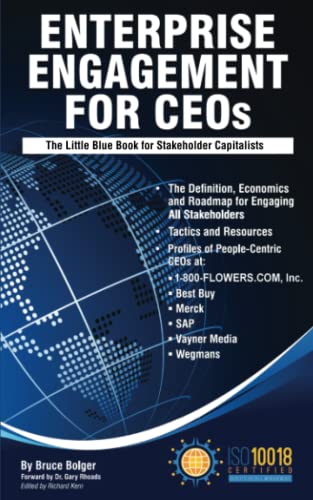
Through education, media, business development, advisory services, and outreach, the Enterprise Engagement Alliance supports boards, business analysts, the C-suite, management in finance, marketing, sales, human resources and operations, etc., educators, students and engagement solution providers seeking a competitive advantage by implementing a strategic and systematic approach to stakeholder engagement across the enterprise. Click here for details on all EEA and RRN media services.
1. Professional Education on Stakeholder Management and Total Rewards

Through education, media, business development, advisory services, and outreach, the Enterprise Engagement Alliance supports boards, business analysts, the C-suite, management in finance, marketing, sales, human resources and operations, etc., educators, students and engagement solution providers seeking a competitive advantage by implementing a strategic and systematic approach to stakeholder engagement across the enterprise. Click here for details on all EEA and RRN media services.
1. Professional Education on Stakeholder Management and Total Rewards
- Become part of the EEA as an individual, corporation, or solution provider to gain access to valuable learning, thought leadership, and marketing resources.
- The only education and certification program focusing on Stakeholder Engagement and Human Capital metrics and reporting, featuring seven members-only training videos that provide preparation for certification in Enterprise Engagement.
-
EEA books: Paid EEA participants receive Enterprise Engagement for CEOs: The Little Blue Book for People-
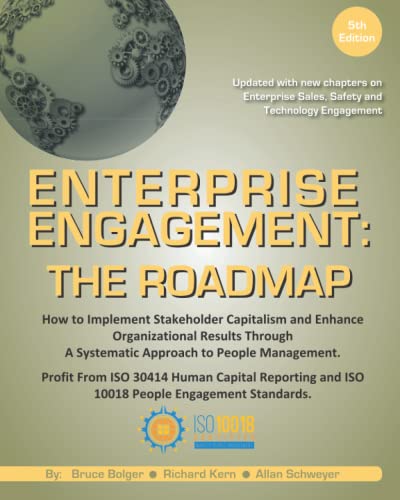 Centric Capitalists, a quick implementation guide for CEOs; Enterprise Engagement: The Roadmap 5th Edition implementation guide; a comprehensive textbook for practitioners, academics, and students, plus four books on theory and implementation from leaders in Stakeholder Management, Finance, Human Capital Management, and Culture.
Centric Capitalists, a quick implementation guide for CEOs; Enterprise Engagement: The Roadmap 5th Edition implementation guide; a comprehensive textbook for practitioners, academics, and students, plus four books on theory and implementation from leaders in Stakeholder Management, Finance, Human Capital Management, and Culture.
2. Media
- ESM at EnterpriseEngagement.org, EEXAdvisors.com marketplace, ESM e–newsletters, and library.
- RRN at RewardsRecognitionNetwork.com; BrandMediaCoalition.com marketplace, RRN e-newsletters, and library.
- EEA YouTube Channel with over three dozen how-to and insight videos and growing with nearly 100 expert guests.
3. Fully Integrated Business Development for Engagement and Total Rewards
Strategic Business Development for Stakeholder Management and Total Rewards solution providers, including Integrated blog, social media, and e-newsletter campaigns managed by content marketing experts.
4. Advisory Services for Organizations
Stakeholder Management Business Plans; Human Capital Management, Metrics, and Reporting for organizations, including ISO human capital certifications, and services for solution providers.
5. Outreach in the US and Around the World on Stakeholder Management and Total Rewards
The EEA promotes a strategic approach to people management and total rewards through its e-newsletters, web sites, and social media reaching 20,000 professionals a month and through other activities, such as:
Strategic Business Development for Stakeholder Management and Total Rewards solution providers, including Integrated blog, social media, and e-newsletter campaigns managed by content marketing experts.
4. Advisory Services for Organizations
Stakeholder Management Business Plans; Human Capital Management, Metrics, and Reporting for organizations, including ISO human capital certifications, and services for solution providers.
5. Outreach in the US and Around the World on Stakeholder Management and Total Rewards
The EEA promotes a strategic approach to people management and total rewards through its e-newsletters, web sites, and social media reaching 20,000 professionals a month and through other activities, such as:
- Association of National Advertisers Brand Engagement 360 Knowledge Center to educate brands and agencies.
- The EEA Engagement widget to promote, track, and measure customers/employee referrals and suggestions that can be connected to any rewards or front-end program management technology.
- The Stakeholder Capitalism free insignia to promote a commitment to better business.
- The BMC Brand Club and transactional storefronts to educate corporate and agency buyers on the IRR market.
- The EME Gold program to educate the top 3% of promotional consultants on selling engagement and rewards services.






